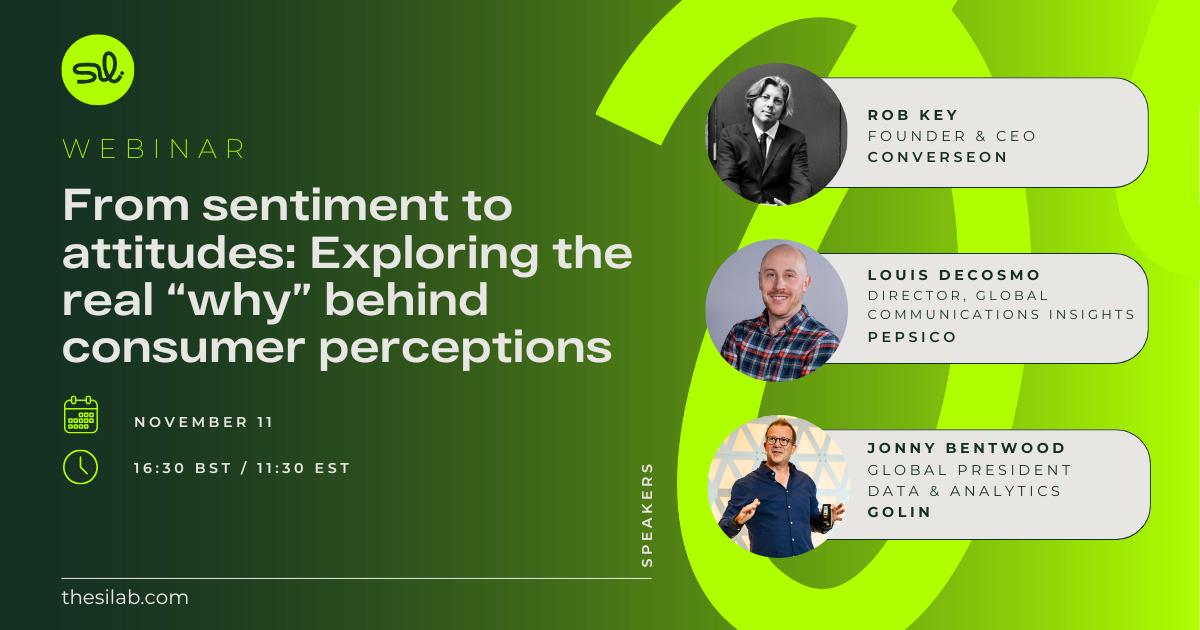
Social Intelligence Growth Series: The briefing process
Success with social data is not easy
Whether you’re new to the whole thing or running a department it takes a lot to harness the (huge!) benefits of this incredible method.
So where do you start? At the beginning of course. And here’s the important bit - the beginning means you start. Before you get into scoping the details, rush off to get sign off on that proposal or sign up for a tool.
It’s all too easy to get carried away with the prospect of epic results and run off into the depths of a project. And as many of us are pioneering social data, we’re keen. Boy, can we run.
As with most things in life, it’s all in the preparation.
But first, social data isn’t always the answer
Yes, we love it but social intelligence isn’t always the answer to the question. More often it’s just part of it. And actually, the best social intelligence projects do not exist on their own - they fill a gap or join the dots. You’ll need to be just as interested in the other research going on in the business, to be able to see how social data gives an advantage. Remember we’re championing the use of social data as a source to find insights that are useful, not just because it’s fun.
Question to ask yourself: What other research is going on and how does social data expand on it or test it?
Check that social intelligence isn’t just confirming what the business already knows, it should be adding something new to be taken seriously.
Social intelligence projects are only as good as the brief
The briefing process is often given over to the part of the business that made the request to ‘do some social listening’, particularly in larger organisations. While it’s great that there are requests being made (finally), it’s really important that you stay inside and up close to this process and help to work out what is really being asked of social data. It helps to manage expectations, ensure the insights are actionable, and write the story of the project.
Some tips for a great briefing process:
- Scope the project and its potential impact before you even get to the brief (we create the Social Intelligence Project Canvas for this).
- Have a template.
- Give examples of previous briefs and outcomes (or case studies if this is new) to manage expectations.
- Understand EVERYTHING else going into this question/problem, including other research and stakeholders so social intelligence isn’t standalone.
- Don’t be scared to split social intelligence projects when different stakeholders have many competing objectives.
And the brief is only as good as the research design
Good research design is everything. It covers the problem, how you’ll know when you’ve got the answers, what data you're going to focus on, and what metrics or frameworks you'll use when you analyse the data.
Some tips for great research design:
- Think about the questions the business needs to answer, rather than what the technology can provide you.
- Remember there can be a difference between what we as researchers might find interesting and what the company needs to know commercially.
Growth in social intelligence isn’t just about the success of that big project...
Understanding context
Social intelligence is a journey. Sounds too simple I know, but many of us need reminding of this. Whether this is your first or 100th project, the context of where we are as a department is important. We see practitioners flitting between feeling exhilarated at the beginning of a project or feeling social data work has got stuck, that there’s no more it can do for the business. Much of this is down to our own perspective of where social intelligence fits.
So we need to take stock of where we are before we plan the next project. Social intelligence is a marathon that changes course all the time - not a hundred-yard dash. You can’t see the end (which is one of the great things about our work).
This involves thinking outside of this project and taking the time to see the development of your practices, approaches, and processes. We need to look at where social intelligence is adding value right now, or has in the past and add in the mindset that there is always more that can be done. And there is always more that can be done. Our job as practitioners is to represent that to our organisations. Social intelligence is about the how, not the what. Even our most established social intelligence teams are constantly changing and evolving, finding new ways to work. Stay curious.
Question to ask yourself: What’s the story I’m telling of social data across my organisation?
To learn more about how to start using social data more effectively, sign up for this year's Social Intelligence Growth Certification.
This interview was recorded via LinkedIn Live, if you prefer to view on LinkedIn, click the button below.
View InterviewSee related content
.png)








